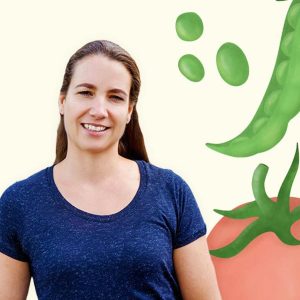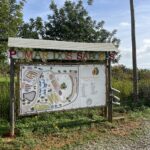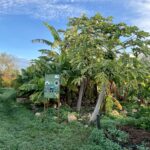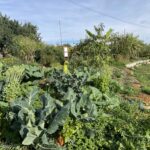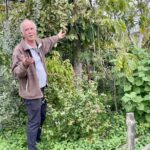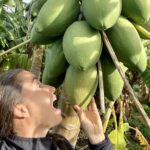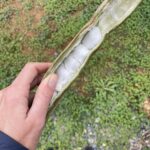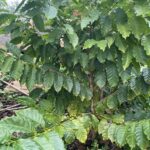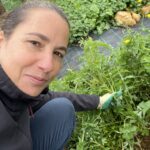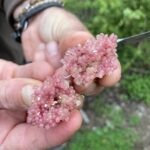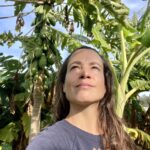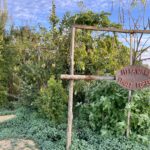Orchard of Flavours provides hope with subtropical edible trees
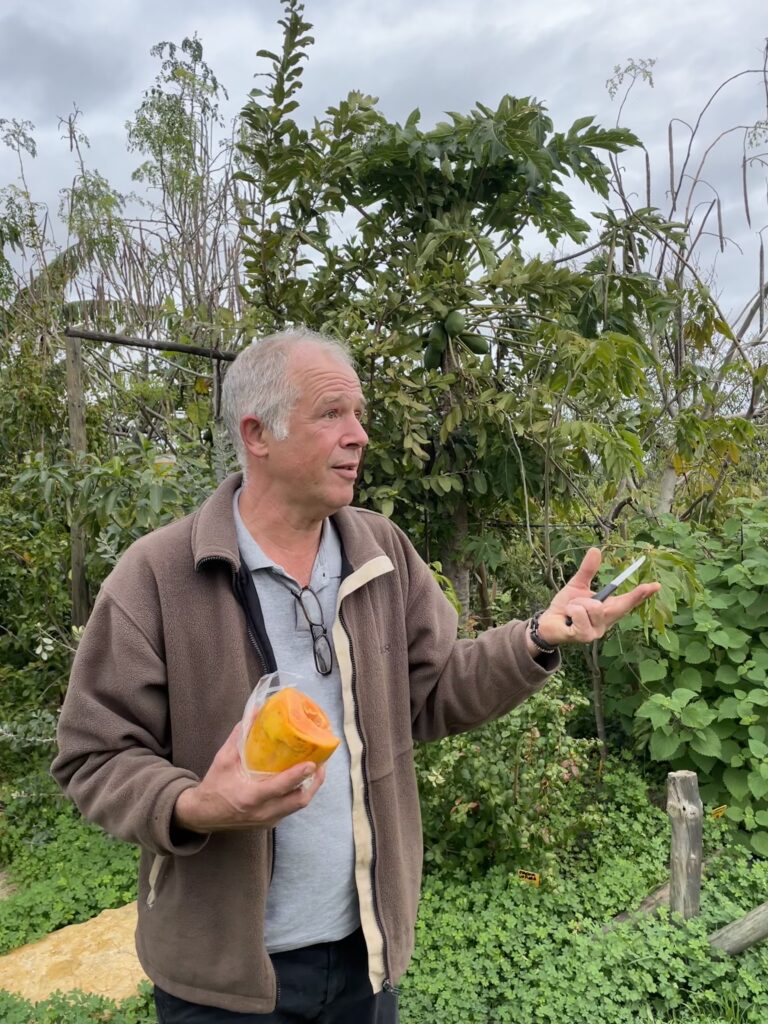
What does planting edible, subtropical trees from around the world in the Algarve contribute to a resilient food system? A lot, I’m learning this week from my peasmaker Miguel Cotton from Orchard of Flavours.
(Please note that this text is translated by Open AI. I write my all my peas in Dutch)
I myself didn’t initially see the connection. Shouldn’t we focus on local, indigenous crops? Until I spoke to Miguel and realised that, on his two hectares in the Portuguese Algarve, he is essentially creating the effect of a time machine. Because almost all fruit varieties that we eat come from trees that are not originally from Europe. Over the centuries, people brought these trees and optimised them for use in Europe. And that’s essentially what the Belgian Miguel is doing here in the Algarve, but at an accelerated pace.
Experimenting through trial and error
Miguel plants various edible trees sourced from different places, following the principles of agroecology and the Miyawaki method, and incorporating elements of permaculture and syntropic agriculture. In the botanical garden, I see the Elephant toe banana and papaya, but also coffee (!), the Moringa tree, and the ‘lentil tree’ Pigeon Pea. Planting is simply trial and error. Of course, with all available knowledge, but mostly by doing a lot and observing what happens. Which trees survive night frost, and which ones remain pest-free? Miguel meticulously records the results and shares them open source with everyone.
Miguel’s ‘time machine’ is more relevant than ever because climate change requires us to rapidly find new crops that can withstand higher temperatures and drought. This opens up possibilities for many trees not yet found here. By experimenting and sharing knowledge, southern European countries can soon plant various new types of edible trees, even in depleted areas. Miguel doesn’t only think about farmers and growers. No, especially regular people with a garden. If you want to plant a beautiful tree, why not make it an edible one? That could be essential in the future.
Gardening professor
So, everyone is welcome at Orchard of Flavours. Scientists, tourists, and garden enthusiasts are already discovering this oasis. Miguel energetically guides them around because education happens to be his thing too. Besides being a gardener, he is also a marketing professor at a university in Brussels.
The passion for everything that grows and blossoms has always been there for Miguel. He practically grew up in his grandmother’s garden, which she tended to herself until she was 87. Miguel is a scientist at heart; I notice his detailed approach everywhere. But his true passion is being in the garden; that’s what truly makes him happy. And you can see and hear it in everything he does. I have rarely heard someone so passionately talk about trees.
Miguel knows an incredible amount and doesn’t stop enticing me to learn more about the beautiful edible trees. “Have you seen that 3-meter-high papaya tree? It was only 10 centimeters in July!” And: “Do you know the peanut butter tree?” What?! Unfortunately, the fruits aren’t ripe yet, so I can’t taste them. I guess I’ll have to come back in the spring…
Ik ben Chantal en reis door het land in mijn camper searching for peas. Ik maak verhalen vol inspiratie over peasmakers; voedselveranderaars die werken met hun hart en zo de wereld veranderen. Ik ga aan de slag bij ze voor een dag of week. Zo leer ik hun missie beter kennen en kom ik erachter wat hen drijft als persoon. In de tussentijd probeer ik te ontdekken wat het voor mij betekent om een goed leven te leven. Mijn ervaringen deel ik met jullie.
